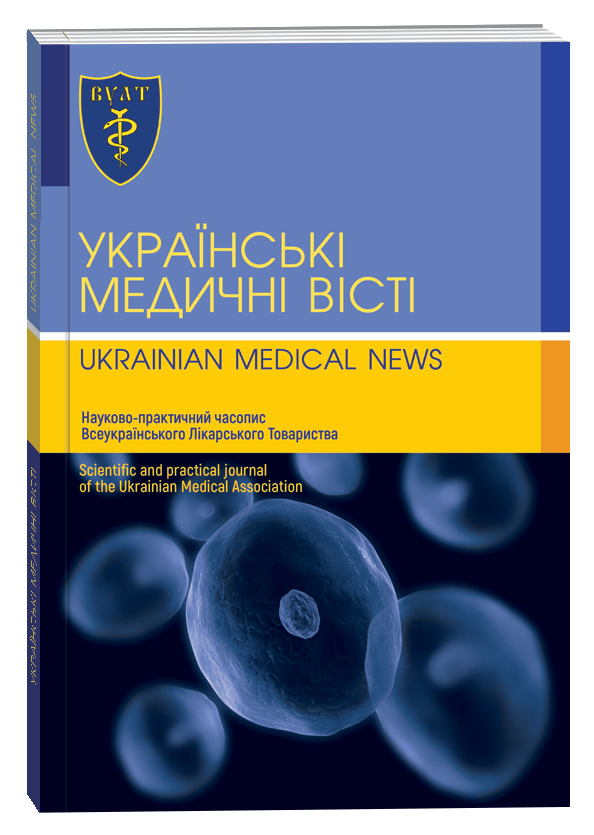INFECTION RELATED TO MEDICAL CARE: MONITORING OF ANTIBIOTICS RESISTANCE AND ANTIBIOTICOTHERAPY
DOI:
https://doi.org/10.32471/umv.2709-6432.86.1067Keywords:
antibiotic resistance, Health care-associated infections, epidemiological monitoring, rational antibiotic therapy.Abstract
A search was conducted in the databases Scopus, Web of Science, MedLine, The Cochrane Library. Antibiotic resistance (ABR) is usually registered 1–3 years after the start of new drugs, especially in the hospital. Health care-associated infections (HCAIs) is absent upon admission to the hospital and occurs in the patient during treatment after 2 days after admission to the hospital, long-term care facility, outpatient clinic, and may occur after discharge from the hospital. HCAIs also includes occupational infections. There are three main strategies to combat the growing level of ABR: improving the infection control system, rational use of antibiotics, strengthening the safety of health care. The main purpose of epidemiological surveillance is to provide information to the relevant health authorities to develop appropriate measures to control the spread of ABR, optimization of antibacterial therapy in different categories of patients. With the help of WHONET program in each laboratory a computer database is created, which stores information about the patient (passport data), department, test material, date of receipt, the selected microorganism and its sensitivity to antimicrobial drugs. The program allows to cover all aspects of microbiological monitoring; correctly analyze the data obtained during testing of cultures isolated from patients in the hospital. It is important to use in the treatment of HCAIs optimal approaches to antibiotic therapy based on the use of pharmacokinetic / pharmacodynamic model.
References
Афанасьев С.С., Караулов А.В., Алешкин В.А. и др. (2014) Мониторинг антибиотикорезистентности как объективный диагностический и эпидемиологический критерий инфекционного процесса. Иммунопатология, аллергология, инфектология, 4: 61–69.
Кулмагамбетов И.Р., Калиева Ш.С., Бакыбаев Д.Е. (2008) Мониторинг антибиотикорезистентности: мировой опыт контроля и сдерживания распространения. Медицина и экология, 2: 17–22.
Свистунов С.А., Кузин А.А., Суборова Т.Н., Огарков П.И. (2012) Опыт использования компьютерной программы WHONET для эпидемиологического изучения инфекций, связанных с оказанием медицинской помощи. Медицинский альманах, 22(3): 107–110.
Строкань А.М., Шевченко Л.В., Пилипенко М.М., Харченко Л.А. (2016) Локальний формуляр призначення антибактеріальної терапії в хірургічних підрозділах клінічної лікарні «Феофанія». Медицина невідкладних станів, 74(3): 166–178.
Drug Resistance. https://courses.lumenlearning.com/microbiology/chapter/drug-resistance.
Freeman M.K. (2010) Nosocomial Pneumonia. US Pharm, 35(7): HS-2-HS-4.
Fuhrmeister A.S., Jones R.N. (2019) The Importance of Antimicrobial Resistance Monitoring Worldwide and the Origins of SENTRY Antimicrobial Surveillance Program. Open Forum Infectious Diseases, 6(S1): 1–4.
Hindler J., Stelling J. (2007) Analysis and presentation of cumulative antibiograms: a new consensus guideline from the Clinical and Laboratory Standards Institute. Clinical Infectious Diseases, 44(6): 867–873. doi: 10.1086/511864.
Johnson A.P. (2015) Surveillance of antibiotic resistance. Phil. Trans. R. Soc. B., 370: 20140080. http://dx.doi.org/ 10.1098/rstb.2014.0080.
Joshi M., Kaur S., Kaur H.P., Mishra T. (2019) Nosocomial infection: source and prevention. Int J Pharm Sci & Res., 10(4): 1613–1624. doi: 10.13040/IJPSR.0975-8232.10(4).1613-24.
Khan H.A., Baig F.K., Mehboob B.R. (2017) Nosocomial infections: Epidemiology, prevention, control and surveillance. Asian Pacific Journal of Tropical Biomedicine, 7 (5): 478–482.
Lee K.B., Fulco P.P. (2018) Guide to infection control in the hospital. Chapter 21: The Pharmacy, рр. 1–9.
Leth R.A., Møller J.K. (2006) Surveillance of hospital-acquired infections based on electronic hospital registries. The Journal of hospital infection, 62(1): 71–79. https://doi.org/10.1016/j.jhin.2005.04.002.
Lewis R.H., Sharpe J.P., Swanson J.M., et al. (2018) Reinventing the wheel: Impact of prolonged antibiotic exposure on multidrug-resistant ventilator-associated pneumonia in trauma patients. J. Trauma Acute Care Surg, 85: 256–262. doi: 10.1097/TA.000000000000 1936.
Luisetto M. (2017) Infectious Disease Pharmaceutical Care: The Role of the Clinical Pharmacists to Improve Clinical Outcomes 2017. Journal of Antimicrobial Agents, 3: 2. DOI: 10.4172/2472-1212.1000143.
McFee R.B. (2009) Nosocomial or Hospital-acquired Infections: An Overview. Dis Mon., 55(7): 422–438. doi: 10.1016/j.disamonth.2009.03.014.
Noaman A.Y., Ragab A.H.M., Al‐Abdullah N.et al. (2019) Predicting and reducing «hospital‐acquired infections» using a knowledge‐based e‐surveillance system. Expert systems, 37(1): e12402. https://doi.org/10.1111/exsy.12402.
Pacifici G.M. (2019) Clinical pharmacology of meropenem in infants and children. Clinical and Medical Investigations, 4: 1–9. doi: 10.15761/CMI.1000178.
Sikora A., Zahra F. (2020) Nosocomial Infections. StatPearls. https://www.ncbi.nlm.nih.gov/books/NBK559312/.
Soltani R., Khorvash F., Pazandeh F. (2020) Antimicrobial Resistance Pattern of Nosocomial Infections at a Referral Teaching Hospital. J Pharm Care, 8(1): 26–34.
Tassew S.G., Alebachew Woldu M., Amogne Degu W., Shibeshi W. (2020) Management of hospital-acquired infections among patients hospitalized at Zewditu memorial hospital, Addis Ababa, Ethiopia: A prospective cross-sectional study. PLoS ONE, 15(4): e0231949. https://doi.org/10.1371/journal.pone.0231949.
Voidazan S., Albu S., Toth R. et al. (2020) Healthcare Associated Infections—A New Pathology in Medical Practice? Int J Environ Res Public Health, 17(3): 760. doi: 10.3390/ijerph17030760.
Wu D., Wu C., Zhang S., Zhong Y. (2019) Risk Factors of Ventilator-Associated Pneumonia in Critically III Patients. Front. Pharmacol., 10: 482. doi: 10.3389/fphar.2019.00482.
Wu M.-T. M., Chen H.-Y., Ou T.-Y. et al. (2014) Clinical evaluation of tigecycline in the treatment of nosocomial infection in a hospital in Taiwan. Int J Clin Pharmacol Ther, 52(12): 1030–1036. doi: 10.5414/CP202220.
Zhang J., Li X., Xie J., Zheng W. (2020) Evaluation of a clinical pharmacist consultation service for patients with infectious diseases in China: a systematic review and meta-analysis. Eur J Hosp Pharm, 27: 131–136.







